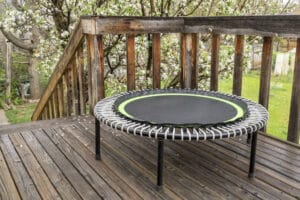How Cold is Too Cold for a Trampoline?
Key Takeaways
- Trampolines can generally be used in cold weather, as they are designed to withstand a wide range of weather conditions.
- It is important to properly winterize a trampoline to protect it from potential damage caused by heavy winds, freezing moisture, and other adverse weather conditions.
- Winterizing a trampoline involves cleaning it thoroughly, removing the enclosure, padding, and ground anchors, and potentially disassembling it by taking down the jumping mat and other removable parts.
Trampolines can provide endless hours of fun and entertainment for both children and adults. However, when it comes to using a trampoline in cold weather, there are certain considerations to keep in mind. Many trampoline owners wonder how cold is too cold for a trampoline, and in this article, we will explore this question in depth.
Can Trampolines be Used in Cold Weather?
The general consensus is that trampolines can indeed be used in cold weather. According to various sources, including picktrampoline.com, sunshineandplay.com, and bumpnbounce.com, trampolines are designed to withstand a wide range of weather conditions, including cold temperatures.
However, it is important to note that specific temperature guidelines for trampoline usage in cold weather are not clearly mentioned in the provided information. The term “too cold” is used, indicating that there is a point where it becomes unsafe or impractical to use a trampoline in extremely cold conditions.
Winterizing Your Trampoline
While trampolines can be used in cold weather, it is essential to properly winterize them to protect them from potential damage. According to bumpnbounce.com, winterizing a trampoline involves a few key steps:
- Cleaning: Before winter sets in, it is recommended to clean the trampoline thoroughly. This helps remove any dirt or debris that may have accumulated during use.
- Removing Enclosure, Padding, and Ground Anchors: To prevent damage from heavy winds or freezing moisture, it is advisable to remove the enclosure, padding, and ground anchors from the trampoline.
- Taking Down Jumping Mat and Other Parts: It may be necessary to disassemble the trampoline by taking down the jumping mat and other removable parts. This ensures that they are not exposed to harsh winter conditions.
Alternatively, if you choose to leave the trampoline outdoors during winter, there are additional precautions to take. Regularly removing snow from the jumping surface is important to prevent excessive weight and stress on the trampoline. Using weather covers can also provide extra protection against adverse weather conditions.
Conclusion
While there is no specific temperature mentioned in the provided information, it can be concluded that trampolines can generally be used in cold weather. However, it is crucial to properly winterize the trampoline to protect it from potential damage caused by heavy winds, freezing moisture, and other adverse weather conditions.
Remember to follow the guidelines mentioned in this article, such as cleaning the trampoline, removing the necessary components, and regularly removing snow if you choose to leave the trampoline outdoors during winter. By taking these precautions, you can ensure the longevity and safety of your trampoline.
Related Websites:
FAQs:
Q: What are the potential risks of using a trampoline in extremely cold weather?
Using a trampoline in extremely cold weather can increase the risk of damage to the springs and mat. Cold temperatures can make the springs brittle and more prone to breakage, while the trampoline mat may become less elastic and more susceptible to tears or cracks.
Q: How can I identify spring damage caused by cold temperatures?
Signs of spring damage caused by cold temperatures include rusting, bending, or snapping of the springs. It is important to regularly inspect the springs for any visible signs of wear and tear, especially after exposure to extreme cold weather.
Q: What safety measures should I take when using a trampoline in cold weather?
When using a trampoline in cold weather, it is important to wear appropriate clothing and footwear to enhance safety and minimize the risk of slips and falls. Additionally, ensure the trampoline is properly maintained, follow safety guidelines, and consider using safety net enclosures or padding.
Q: What is the recommended temperature range for trampoline usage?
The general temperature range considered safe for trampoline usage is around 40°F to 85°F (4°C to 29°C). However, it is crucial to follow the manufacturer’s guidelines regarding temperature limitations, as different trampolines may have specific temperature recommendations.
Q: How can I winterize and protect my trampoline in cold weather?
To winterize your trampoline, consider removing the mat and storing it indoors to prevent damage. You can also cover the frame with a weatherproof trampoline cover and secure it properly. Additionally, remove any snow or ice accumulation from the trampoline to maintain its integrity and prevent excessive weight.






